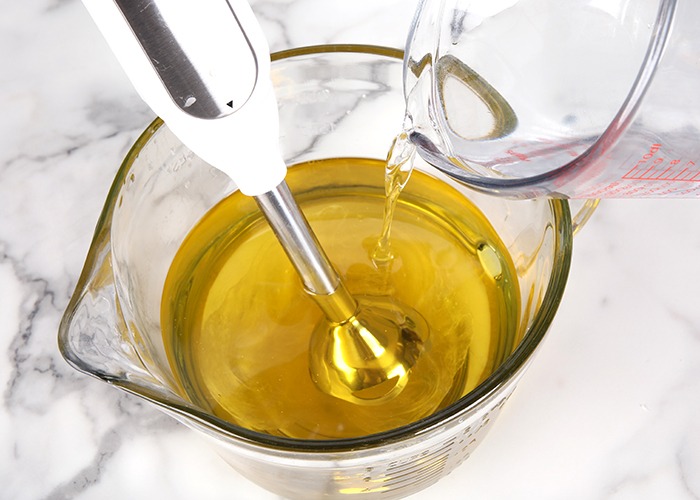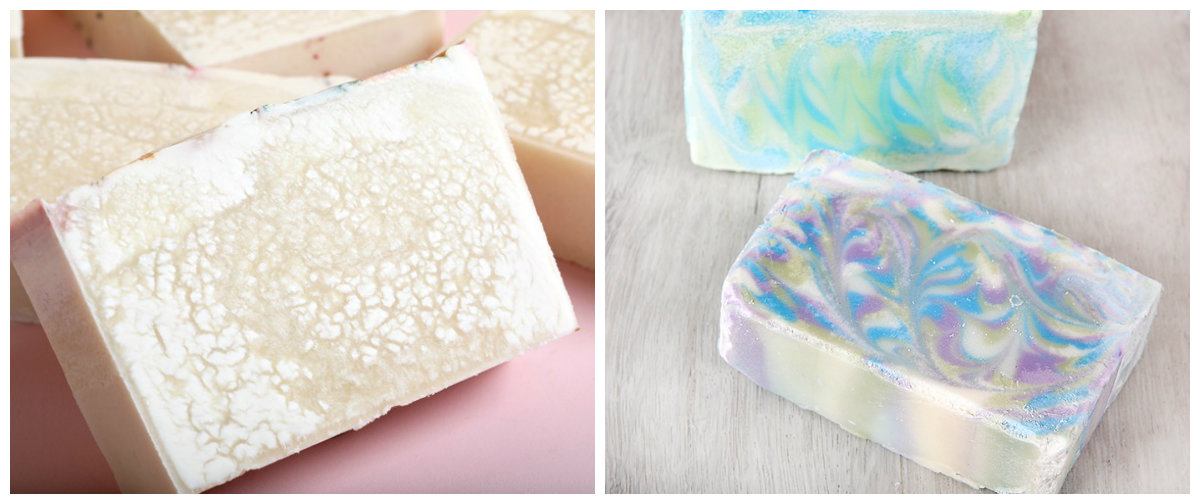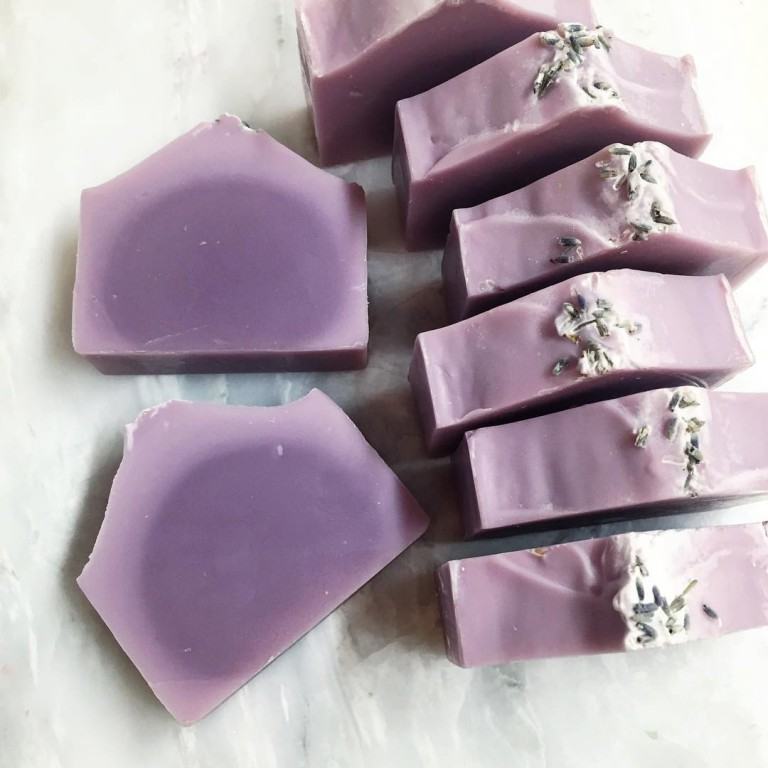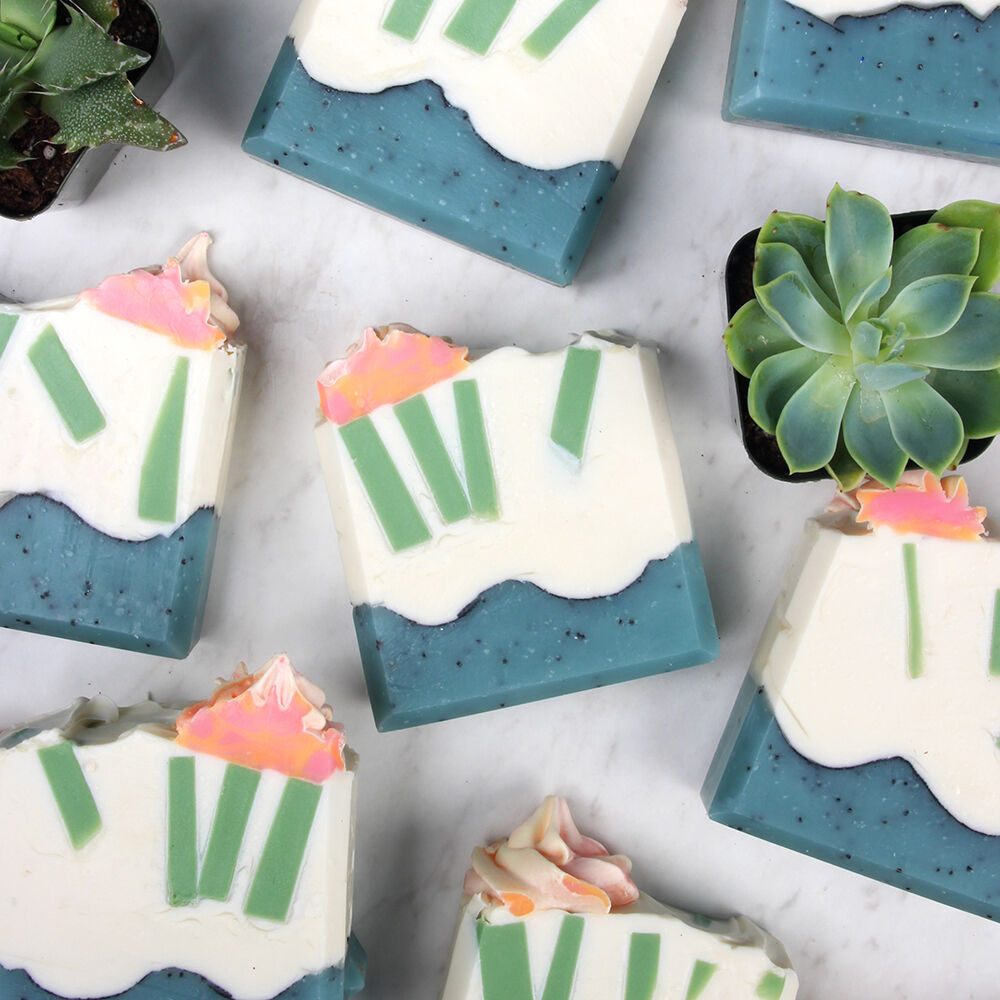
Once you learn the basics of making cold process soap, you can start customizing your recipes. Choose different oils, add your favorite scents, and try new techniques. Water discounting is a simple and effective technique that makes soap harden more quickly. Learn how and why to water discount below.
Water is used to dissolve sodium hydroxide lye so it can react with the oils and start the saponification process. As the soap cures, the water evaporates and creates harder, longer-lasting bars. Typically, a recipe uses about 22% liquid. You can discount that to make a more concentrated lye solution.
Pros of water discounting
Less water/liquid in the soap makes it harden more quickly. That means you can unmold it earlier and it takes less time to cure - your bars may be ready in 3-4 weeks instead of the usual 4-6.
Water discounting also prevents several aesthetic issues. Soda ash forms when unsaponified lye reacts with naturally-occuring carbon dioxide in the air. Simply reducing the water in your recipe helps prevent the white film pictured below on the right. Learn more in the Explaining and Preventing Soda Ash article. Water discounting also helps prevent glycerin rivers. They form when soap gets too hot, especially if you're using colorants like titanium dioxide. The rivers create a cracked or mottled appearance on the bars, as seen in the left image.

You can use a discount any time you want to speed up the soap making process. We also recommend it if your recipe contains additives with extra liquid. A 10% discount with a couple ounces of pumpkin, aloe, apple, etc. will ensure your batch isn't too wet.
Cons of water discounting
Discounting causes the soap to thicken more quickly. If you're working with an accelerating fragrance or if you want to create an intricate design, the batch may thicken so quickly you can't finish it. Plan a simple design for your first few water discounted batches until you get the feel for how fast it traces.
Water discounting can also make it harder to gel cold process soap. Bars that go through gel phase have brighter colors and a slightly shiny look. If that's something you prefer, you need to use higher temperatures. It can also help to cover the mold with a piece of cardboard and a towel, and possibly place it on a heating pad set to medium for 30-60 minutes.

These bars only gelled in the middle, which caused the color difference.
How to calculate a discount
We recommend starting with a discount of 10%. That speeds up the curing time without causing too much acceleration. First, run your recipe through the Bramble Berry Lye Calculator. Then, multiply the water amount by 0.9 to get 90% of it. It's that simple! You don't need to change the lye amount. So if your recipe calls for 15 ounces of water, that would be 15 x 0.9 = 13.5 ounces. If you want a 7% discount, that's 15 x 0.93 = 14 ounces. A 12% discount would be 15 x 0.88 = 13.2 ounces.
We don't recommend more than 15% because it can speed up trace too much. Also, the lye may not fully dissolve. That can create lye pockets in the final bars that irritate or burn the skin. Start somewhere between 1-15%. As you experiment with the amounts, you'll find the discount that works for you and the design you're creating.

Find cold process soap making supplies here.

